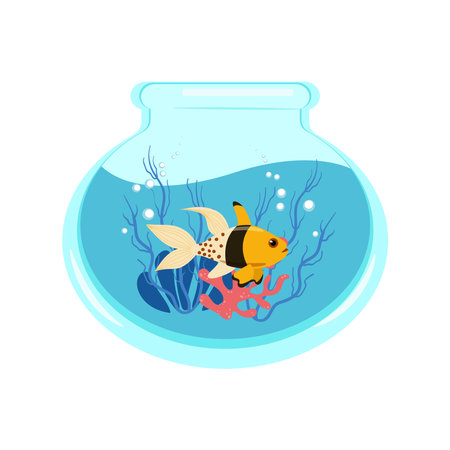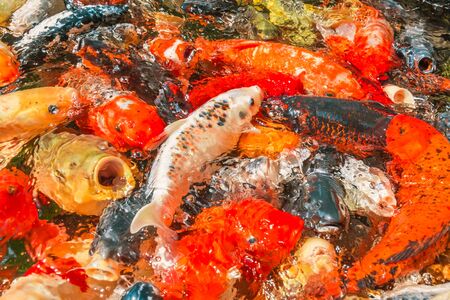1. Introduction to Fish Infections
Keeping fish in an aquarium or pond can be a rewarding experience, but like all pets, fish are susceptible to various infections. Two of the most common types of infections that affect fish are fungal and bacterial infections. Understanding the differences between these infections and recognizing their symptoms early can help ensure timely treatment and prevent serious health issues.
Common Infections in Aquarium and Pond Fish
Fish infections can arise due to poor water quality, injuries, stress, or exposure to pathogens. While some infections may resolve with minor care adjustments, others require specific treatments to prevent spreading and worsening conditions. The two major categories of infections that fish owners should be aware of are fungal and bacterial infections.
Fungal vs. Bacterial Infections
Fungal and bacterial infections in fish have different causes, symptoms, and treatments. Below is a simple comparison:
| Type of Infection | Cause | Symptoms | Treatment |
|---|---|---|---|
| Fungal Infection | Fungi (e.g., Saprolegnia) | White cotton-like growths on skin, fins, or gills | Antifungal medications, improved water quality |
| Bacterial Infection | Bacteria (e.g., Aeromonas, Pseudomonas) | Red sores, ulcers, fin rot, bloating | Antibiotics, salt baths, clean environment |
The Importance of Timely Diagnosis and Treatment
Early detection is crucial when dealing with fish infections. Delayed treatment can lead to severe health problems, spread to other fish, and even fatalities within the tank or pond. Regularly monitoring fish behavior and appearance can help identify signs of infection early, allowing for prompt intervention.
In the following sections, we will explore the key differences between fungal and bacterial infections in more detail, including their causes, symptoms, and effective treatments.
2. Key Differences Between Fungal and Bacterial Infections
Understanding the differences between fungal and bacterial infections in fish is essential for proper diagnosis and treatment. These infections have distinct symptoms, causes, and appearances that can help fish owners determine the best course of action.
Comparison of Symptoms
Fungal and bacterial infections present differently in fish. Below is a comparison of their typical symptoms:
| Type of Infection | Common Symptoms |
|---|---|
| Fungal Infection | Cotton-like white or gray growths on skin, fins, or gills; lethargy; loss of appetite |
| Bacterial Infection | Red sores, ulcers, fin rot, bloated body, abnormal swimming behavior |
Main Causes of Infections
The causes of fungal and bacterial infections differ as well. Knowing these causes can help prevent outbreaks in your aquarium.
| Type of Infection | Main Causes |
|---|---|
| Fungal Infection | Poor water quality, dead organic matter, stress, previous injuries |
| Bacterial Infection | Poor water conditions, external wounds, overcrowding, weakened immune system |
Visual Appearance of Infections
The appearance of these infections can help distinguish between them. Fungal infections typically appear as fluffy or cotton-like patches on the fishs body. In contrast, bacterial infections often cause open sores, red streaks, or decaying fins.

3. Causes and Risk Factors
Fish can become susceptible to infections due to a variety of environmental conditions, stress factors, and other contributing elements. Understanding these risks can help fish owners take preventive measures to maintain a healthy aquatic environment.
Environmental Conditions
Poor water quality is one of the primary causes of both fungal and bacterial infections in fish. Unstable temperature, high ammonia or nitrite levels, and low oxygen content can weaken a fishs immune system, making them more prone to disease.
| Factor | Effect on Fish Health |
|---|---|
| Poor Water Quality | Increases stress and weakens immunity |
| Unstable Temperature | Makes fish more vulnerable to infections |
| Low Oxygen Levels | Reduces fishs ability to fight diseases |
| Overcrowding | Leads to increased aggression and stress |
Stress Factors
Stress plays a major role in making fish vulnerable to infections. Common stressors include aggressive tank mates, sudden water changes, poor diet, and transportation. When a fish is stressed, its immune system weakens, making it easier for bacteria or fungi to take hold.
Aggressive Tank Mates
If a fish is constantly being harassed by other tank mates, it may develop wounds that create an entry point for infections.
Poor Diet
A lack of essential nutrients weakens the immune system, making it harder for fish to fight off infections naturally.
Other Contributing Factors
Apart from water quality and stress, other factors such as introducing new fish without quarantine and handling fish improperly can also contribute to infections.
Lack of Quarantine for New Fish
Addition of new fish without proper quarantine increases the risk of introducing pathogens into the tank.
Poor Handling Practices
Nets or hands that are not properly sanitized can introduce harmful bacteria or fungi when moving fish between tanks.
4. Treatment Options for Fungal and Bacterial Infections
Proper treatment is essential to help your fish recover from infections. The right approach depends on whether the infection is fungal or bacterial. Below, we’ll go over the most effective medications, water treatments, and quarantine procedures to ensure your fish get the best care.
Medications for Fungal and Bacterial Infections
Using the right medication is key to treating infections effectively. Here’s a breakdown of common treatments:
| Type of Infection | Common Medications | Usage |
|---|---|---|
| Fungal Infections | Methylene Blue, Malachite Green, Pimafix | Used as bath treatments or added directly to the tank |
| Bacterial Infections | Erythromycin, Kanamycin, Maracyn 2 | Can be mixed with food or added to water depending on severity |
Water Treatments to Support Healing
Maintaining clean and stable water conditions is crucial for recovery. Consider these steps:
- Increase Aeration: Better oxygen levels help fish heal faster.
- Adjust Water Temperature: Some bacteria thrive in warmer waters, so adjusting temperature may slow their spread.
- Add Aquarium Salt: A small amount of salt can help fight infections and reduce stress.
- Frequent Water Changes: Removing waste and toxins helps prevent infections from worsening.
The Importance of Quarantine Procedures
If a fish shows signs of infection, quarantining it can prevent the illness from spreading. Follow these steps for an effective quarantine:
- Set Up a Separate Tank: Use a small hospital tank with clean, conditioned water.
- Add Medications as Needed: Treat the infected fish without affecting healthy ones in the main tank.
- Monitor Daily: Check for improvements and adjust treatment if necessary.
- Keep in Quarantine Until Fully Healed: Only return the fish once it shows no signs of infection for several days.
When to Seek Professional Help
If symptoms persist despite treatment, consider consulting an aquatic veterinarian. Some infections require prescription-strength antibiotics or specialized care that over-the-counter medications may not provide.
Treating fungal and bacterial infections properly ensures a healthier environment for your fish. With early detection and the right care, most infections can be managed successfully.
5. Prevention and Long-Term Fish Health
Keeping your fish healthy and preventing infections starts with proper tank care, good nutrition, and reducing stress. By following these best practices, you can create a safe environment for your fish and minimize the risk of fungal or bacterial infections.
Maintain a Clean Tank
A clean tank is essential for preventing harmful bacteria and fungi from thriving. Here are some key steps to ensure proper tank maintenance:
| Task | Frequency |
|---|---|
| Partial water changes (25-30%) | Weekly |
| Gravel vacuuming | Every 2 weeks |
| Filter cleaning | Monthly |
| Check water parameters (pH, ammonia, nitrite, nitrate) | Weekly |
| Remove uneaten food and debris | Daily |
Provide Proper Nutrition
A well-balanced diet helps strengthen your fishs immune system, making them less susceptible to infections. Follow these guidelines for optimal nutrition:
- Feed high-quality fish food that meets species-specific dietary needs.
- Avoid overfeeding; only give what they can eat in 2-3 minutes.
- Include variety in their diet, such as flakes, pellets, frozen, or live foods.
- Add vitamin supplements if needed to boost immunity.
Reduce Stress in Your Fish
Stress weakens a fish’s immune system, making them more prone to diseases. To keep stress levels low:
- Avoid overcrowding—ensure the tank size is appropriate for the number of fish.
- Create hiding spots using plants, caves, or decorations.
- Keep water temperature stable and suitable for your fish species.
- Avoid sudden changes in water conditions or introducing new fish without quarantine.
- Limit excessive handling or tapping on the glass.
The Importance of Quarantine
If you’re adding new fish to your aquarium, always quarantine them first to prevent the introduction of harmful pathogens. A separate quarantine tank allows you to observe new fish for signs of disease before introducing them to your main tank.


